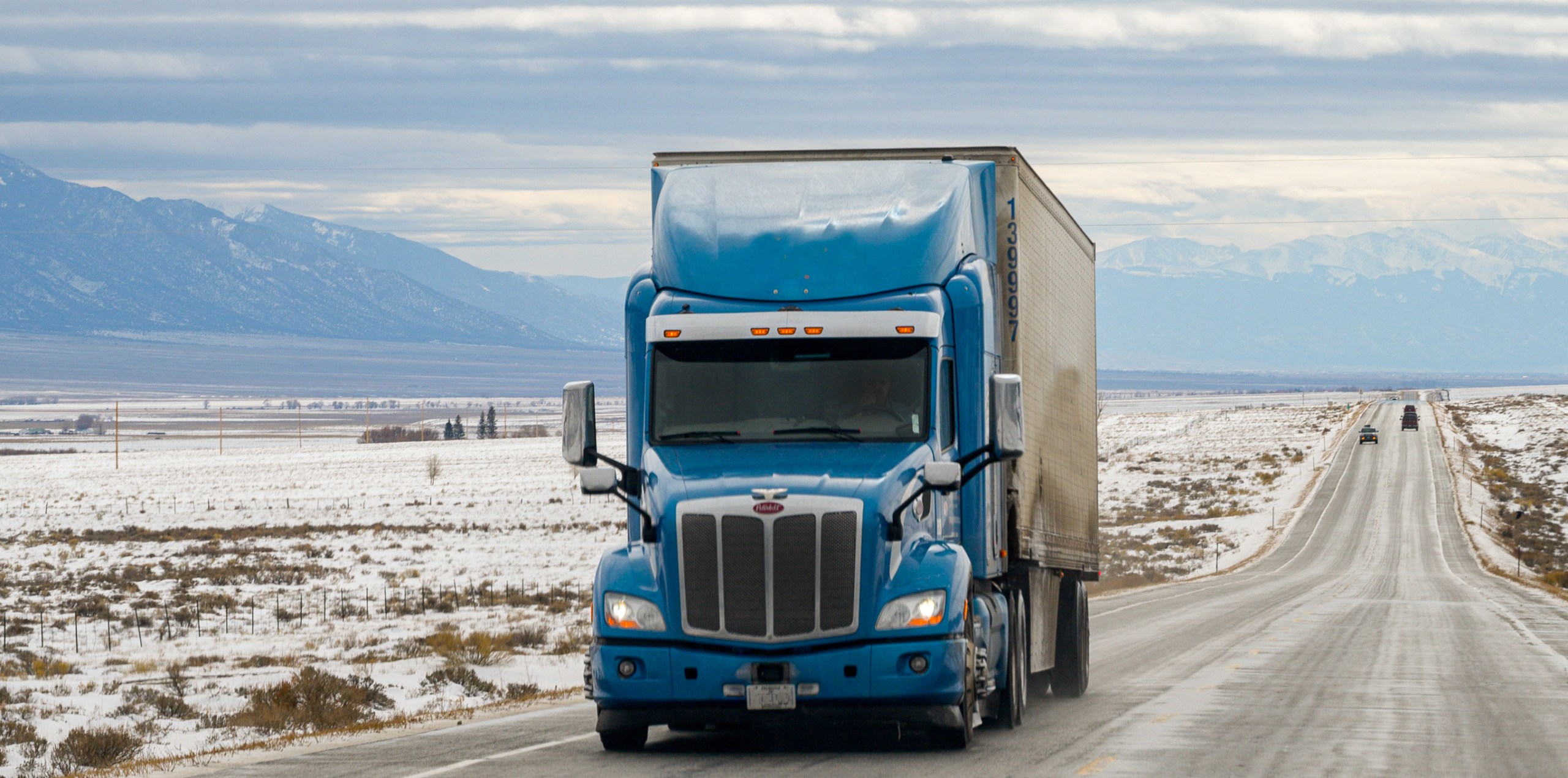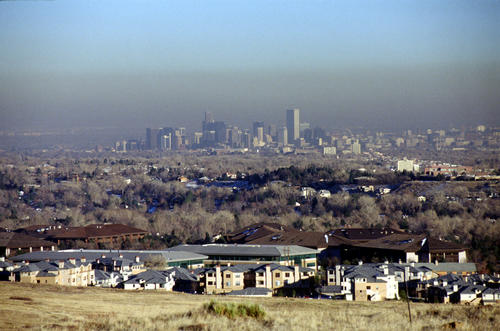The Three Biggest Reasons We Need Cleaner Trucks in Colorado
This blog is part of a series exploring how Colorado could benefit from adopting rules that would bring down harmful pollution from trucks. Read the rest of the series by visiting our partners at Sierra Club and 350 Colorado!
When people imagine Colorado, they might think of stunning landscapes and fresh mountain air. They probably don’t conjure an image of congested highways, smoggy skies, and alarming rates of health conditions like asthma. Yet for many people in the state, the second image is just as much of a reality as a first. For all its natural beauty, Colorado is plagued by issues with air quality, and a big part of the problem is large trucks and buses that emit dangerous pollutants such as nitrogen oxides and particulate matter.
When it comes to the health impacts of this pollution, low-income and Black, Indigenous, and Latine communities are disproportionately in harm’s way. The legacy of racist policies around zoning and highway construction means that major highways are most often located near these communities; for example, according to the Colorado Latino Climate Justice Policy Handbook, 69% of all highway miles in Colorado are in counties with the highest Latino populations.
Colorado’s air quality regulators are currently considering a critical solution to this problem: two new rules that would help reduce air pollution from large trucks. The Heavy-Duty Omnibus rule would significantly reduce pollution from new heavy-duty combustion engines by strengthening the standards for toxic emissions. And the Advanced Clean Trucks rule further reduces harmful pollutants—particularly greenhouse gasses—by requiring auto manufacturers to sell a minimum percentage of zero-emission medium- and heavy-duty vehicles. These sales requirements vary by vehicle class and increase gradually over time.
Adopting these rules will help clean up Colorado’s air and protect public health. Here are three major reasons Colorado should adopt the rules this year:
1. Colorado’s Front Range Is Plagued by Unhealthy Air
For over a decade, air quality in Colorado has exceeded the health-based standards for ground-level ozone set by the federal government. Colorado’s poor air quality harms public health, especially in frontline communities.
Medium- and heavy-duty vehicles are one of Colorado’s largest sources of ozone-forming pollutants. Ozone can lead to premature death and other devastating health problems, including asthma, cardio and respiratory distress, pregnancy complications and low birth weights, and even cancer. Despite making up less than 10% of Colorado’s vehicles, medium- and heavy-duty vehicles are responsible for 22% of climate pollution from the transportation sector, 30% of on-road NOx emissions, and 40% of on-road, direct fine particulate matter emissions.
2. Truck Pollution Disproportionately Harms Lower-Income and BIPOC Communities
Low-income neighborhoods and communities of color breathe in an average of 28% more NOx pollution than higher-income and majority-white neighborhoods. This is a direct result of their proximity to major sources of truck pollution, such as freight corridors. According to the Colorado Latino Climate Justice Policy Handbook, counties with high Latino populations have over two times more miles of highway than counties with low Latino populations.
The heavily-trafficked I-270 corridor, which connects I-70 to I-25, runs through communities in Commerce City, Globeville, and Elyria-Swansea that are already burdened by proximity to major polluters such as the Suncor oil refinery and Cherokee generating station. The breakdown of community demographics in these areas is striking: Elyria-Swansea is made up of 82% Latino residents, with 20% of residents living below the poverty line; Globeville is 57% Latino with 34% of residents living below the poverty line. When compared to the Denver Metro region as a whole, which is 22% Latino and has a rate of 11% of residents living below the poverty line, the disparity is clear. In these communities, environmental pollution can shorten residents’ lives by 10-20 years.
3. Clean Truck Rules will Slash NOx Emissions and Protect Coloradans
The Heavy-Duty Omnibus rule will reduce emissions from new heavy-duty vehicles by 90% starting in 2027. A study by MJ Bradley & Associates found that the Heavy-Duty Omnibus rule could result in roughly 5,500 tons of annual NOx reductions by 2050, with significant reductions in earlier years.
The study also evaluated the Advanced Clean Trucks rule, finding $11.8 billion in statewide benefits from cumulative greenhouse gas, NOx, and PM reductions through 2050. An October 2022 report from the American Lung Association estimated $5.4 billion in health benefits to Colorado through 2050, including 485 avoided premature deaths, 18,520 avoided asthma attacks, and 89,000 lost workdays avoided.
The data is clear: trucks and buses are harming Colorado’s air quality and threatening public health, especially in low-income and BIPOC communities that are disproportionately impacted by pollution. The good news is, the state has an opportunity to change course by adopting clean trucks rules this year. The Advanced Clean Trucks and Heavy-Duty Omnibus rules will help get cleaner trucks on the road and improve our air quality, leading to better healthier futures for those most impacted. It’s time for Colorado to adopt these rules!









